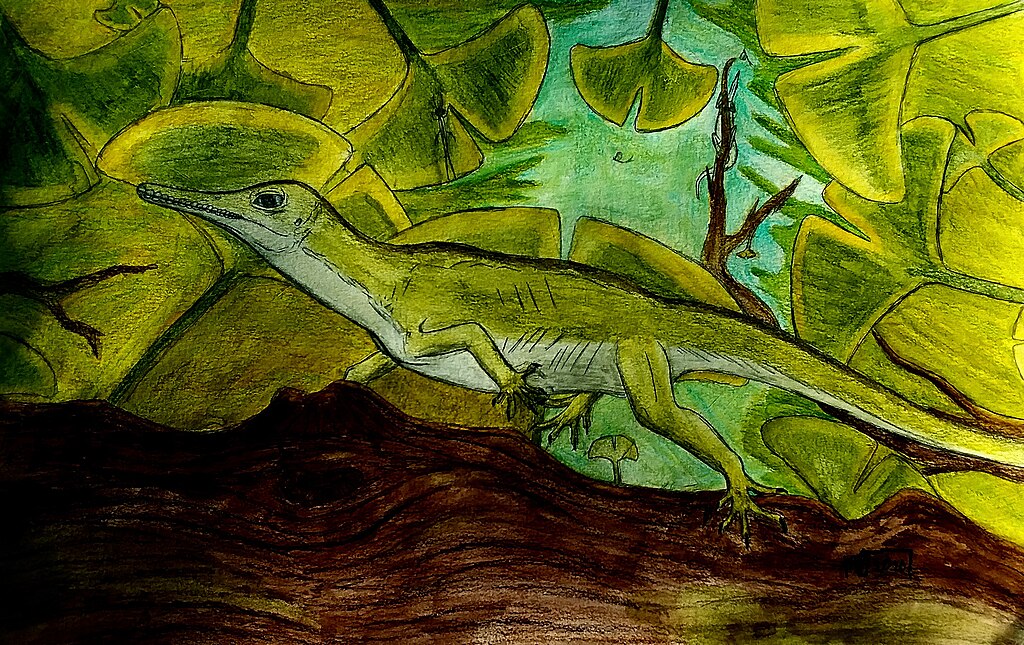The evolutionary journey from dinosaurs to birds represents one of nature’s most remarkable transformations. Once viewed as separate branches on the tree of life, these groups are now understood to share an intimate evolutionary relationship, with modern birds classified as living dinosaurs. The discovery of feathered dinosaur fossils in recent decades has revolutionized our understanding of avian origins, revealing a fascinating period when dinosaurs began developing birdlike characteristics, including smaller body sizes, feathered coverings, and skeletal adaptations for flight. This transitional era, spanning millions of years during the Mesozoic period, showcases an extraordinary evolutionary experiment that ultimately produced the diverse birds we see today. Join us as we explore this remarkable chapter in Earth’s history, examining the evidence, key species, and scientific breakthroughs that have illuminated the era of feathered evolution and birdlike miniatures.
The Archaeopteryx Revelation

The discovery of Archaeopteryx in 1861 in the Solnhofen limestone of southern Germany marked a watershed moment in paleontology, providing the first compelling evidence of a transitional form between dinosaurs and birds. With its mixture of reptilian features (teeth, bony tail, clawed fingers) and avian characteristics (feathers, wishbone), this crow-sized creature emerged at a pivotal time in evolutionary history during the Late Jurassic period, approximately 150 million years ago. The exquisite preservation of its fossils, including delicate feather impressions, stunned the scientific community and provided crucial support for Darwin’s then-recent theory of evolution. Although not a direct ancestor of modern birds, Archaeopteryx represents a side branch that demonstrates how dinosaurs were experimenting with bird-like adaptations. The specimen’s discovery fundamentally altered our understanding of avian origins and continues to be one of paleontology’s most significant finds, often described as the “missing link” that bridges the evolutionary gap between two seemingly disparate animal groups.
The Feathered Dinosaurs of Liaoning
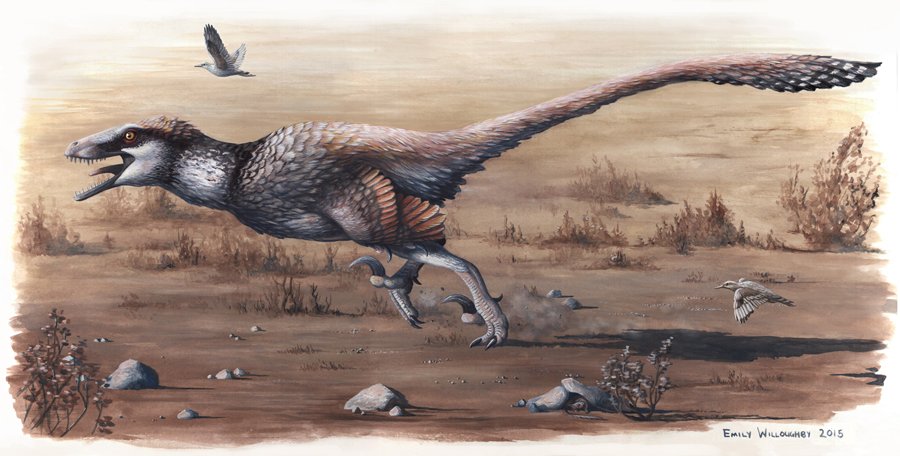
The fossil beds of Liaoning Province in northeastern China have yielded what many consider the paleontological treasures of the century: remarkably preserved feathered dinosaurs that have transformed our understanding of avian evolution. Beginning in the 1990s, these deposits—dating primarily to the Early Cretaceous period about 120-130 million years ago—have produced a spectacular array of specimens with intact feather impressions thanks to the fine-grained lake sediments that captured extraordinary detail. Species like Sinosauropteryx, the first non-avian dinosaur confirmed to have feathers, revealed primitive filamentous structures covering its body. More advanced forms like Microraptor showed fully developed flight feathers on all four limbs, suggesting it may have been a glider moving through ancient forests. The volcanic ash that rapidly buried these creatures created perfect conditions for preserving soft tissues that rarely fossilize, offering unprecedented glimpses into the appearance of living dinosaurs. The Liaoning discoveries effectively closed the morphological gap between dinosaurs and birds, demonstrating conclusively that many dinosaur lineages were experimenting with feathers long before true flight evolved.
The Evolution of Feathers
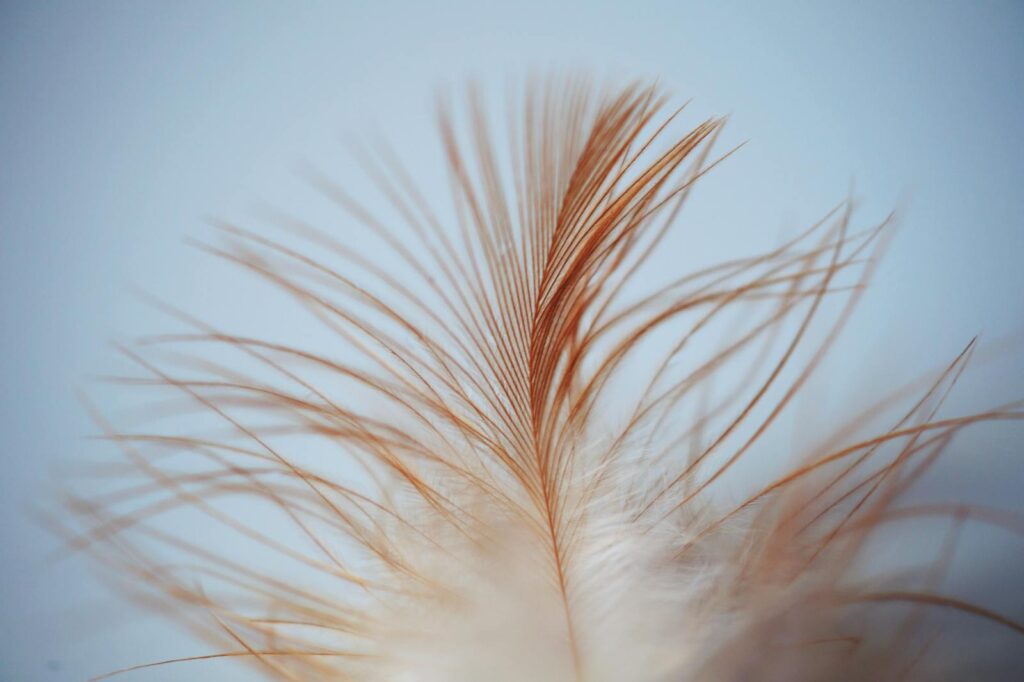
Feathers, once considered the defining characteristic of birds, underwent a complex evolutionary journey beginning long before the appearance of true avians. Paleontologists now recognize that feathers evolved through at least five distinct developmental stages, starting with simple hollow filaments in early theropod dinosaurs that likely served as insulation rather than for flight. These primitive structures, found in dinosaurs like Sinosauropteryx, gradually developed into more complex forms with barbs branching from a central shaft, creating flat vanes as seen in Caudipteryx and Protarchaeopteryx. The discovery of asymmetrical flight feathers in dinosaurs like Microraptor indicates that aerodynamically efficient plumage evolved before powered flight itself. Evidence suggests feathers initially evolved for purposes other than flight—probably for insulation and display—and were only later co-opted for aerial locomotion. This evolutionary sequence is supported by both the fossil record and developmental biology, as modern bird embryos progress through similar stages when growing feathers. The presence of feathers across numerous dinosaur lineages indicates they were a widespread feature of theropod dinosaurs rather than a specialized adaptation limited to the direct ancestors of birds.
Miniaturization: Shrinking Toward Flight
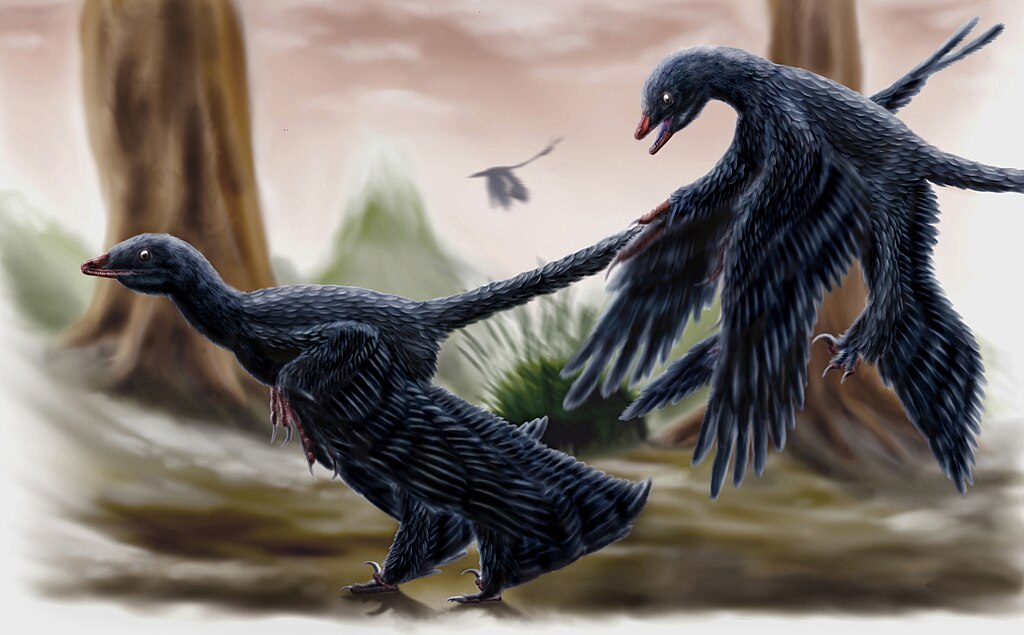
The dramatic reduction in body size among certain theropod dinosaur lineages represents a critical evolutionary trend that ultimately enabled flight. While many theropods maintained substantial proportions, the maniraptoran lineage leading to birds underwent consistent miniaturization over millions of years, with some adult specimens weighing less than a kilogram. This size reduction created favorable conditions for flight by decreasing wing loading—the ratio of body mass to wing area—making aerial locomotion energetically feasible. Research by paleontologists Michael Lee and Andrea Cau demonstrated that these dinosaurs evolved smaller sizes 12 times faster than other dinosaur groups, shrinking from an average weight of 163 kg to just 0.8 kg over 50 million years. Miniaturization was accompanied by other significant changes, including relatively larger brains, reduced snouts, and forward-positioned eyes—adaptations that would prove advantageous for the aerial lifestyle that followed. The diminutive Yi qi and Ambopteryx, with membranous wings supported by elongated fingers, represent experimental gliding forms that emerged within this trend toward smaller body sizes. This pattern of miniaturization beautifully demonstrates how evolutionary pressures can transform massive terrestrial predators into lightweight aerial specialists over geological time.
The Unique Case of Microraptor

Microraptor presents one of the most extraordinary examples of experimentation during the era of feathered evolution, sporting four wings in a configuration unlike any living bird. This pigeon-sized dromaeosaur, discovered in Liaoning’s fossil beds, possessed long flight feathers not only on its arms but also on its legs, creating a bizarre four-winged planform that has fascinated paleontologists since its discovery in 2003. Wind tunnel tests and computer modeling suggest Microraptor was capable of gliding efficiently between trees, potentially using its hindlimb wings for stability and maneuverability rather than powered flight. The creature’s iridescent black plumage, revealed through microscopic analysis of fossil melanosomes, indicates that display and visual signaling were already important functions of feathers in these early bird relatives. Though representing a side branch rather than a direct ancestor to modern birds, Microraptor demonstrates that evolution explored various aerodynamic configurations before settling on the standard two-winged design seen in living birds. This peculiar dinosaur provides compelling evidence that the transition to flight involved numerous experimental forms, many of which left no descendants but illuminate the diverse pathways that evolution explored.
Skeletal Adaptations for Flight
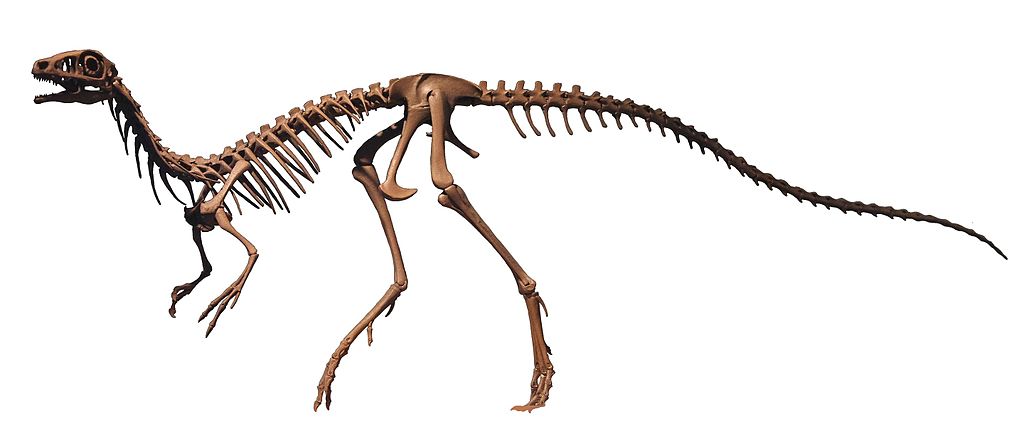
The evolution of flight required profound modifications to the dinosaurian skeleton, creating the lightweight yet strong framework necessary for aerial locomotion. Among the most significant changes was the development of the furcula (wishbone), a fused clavicle structure that stores and releases energy during the flight stroke, which appeared in various theropod dinosaurs before true birds evolved. The gradual elongation of forelimbs relative to hindlimbs created more effective wing surfaces, while the wrist evolved greater flexibility to enable the folding motion critical for the recovery stroke in flight. Another crucial adaptation was the development of a keeled sternum (breastbone) that anchored powerful flight muscles, though this feature appeared relatively late in avian evolution. Pneumatic bones—containing air sacs connected to the respiratory system—dramatically reduced skeletal weight while maintaining structural integrity, an adaptation present in many non-avian theropods that became more pronounced in flying forms. The distinctive pygostyle, a fused tail vertebrae structure that supports tail feathers, evolved from the long bony tails of earlier dinosaurs through a gradual reduction in vertebrae number and increased fusion. These skeletal modifications, occurring incrementally over millions of years, transformed the robust dinosaurian body plan into the lightweight, flight-capable architecture of birds.
The Rise of Advanced Avialans

Beyond Archaeopteryx, the Late Jurassic and Early Cretaceous periods witnessed the emergence of increasingly bird-like creatures that bridged the gap to modern avians. The recently discovered Aurornis and Anchiornis from China potentially predate Archaeopteryx and show that the dividing line between dinosaurs and birds becomes increasingly blurred the more fossils we find. The slightly more advanced Confuciusornis, with its toothless beak and reduced fingers, represents an important step toward modern birds while retaining primitive features like clawed wings. Jeholornis, another key transitional form, maintained a long bony tail unlike modern birds but possessed advanced flight capabilities based on its wing structure and muscle attachment points. The remarkable Ichthyornis from the Late Cretaceous resembled modern birds in most respects but retained teeth in its beak, demonstrating the mosaic nature of evolutionary change. These advanced avialans document the gradual accumulation of avian characteristics, with different lineages acquiring various bird-like traits at different rates through evolutionary experimentation. The growing fossil record of these transitional forms has effectively eliminated any significant “gaps” in the dinosaur-to-bird transition, providing one of evolution’s most thoroughly documented major transformations.
Flight Origins: Trees Down or Ground Up?
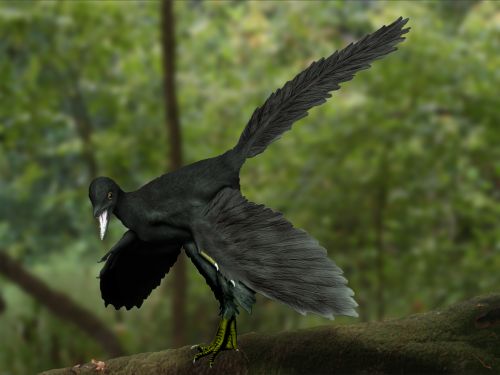
The pathway by which dinosaurs took to the air has been the subject of intense scientific debate, centered around two competing hypotheses: the “trees-down” and “ground-up” models of flight evolution. The arboreal theory proposes that small feathered dinosaurs initially lived in trees and evolved gliding capabilities that gradually developed into powered flight, similar to how flying squirrels might theoretically evolve into bat-like creatures. Supporters point to the climbing adaptations in creatures like Microraptor and the obvious advantages of launching from height. Conversely, the cursorial theory suggests that ground-dwelling dinosaurs developed feathers for insulation and display, then began using wing-assisted running and leaping to capture prey or escape predators, with these behaviors eventually leading to sustained flight. Evidence for this model includes the running adaptations in early bird relatives and the wing-assisted incline running seen in modern birds like the chukar partridge. Recent integrative approaches suggest both pathways may have contributed, with ground-running adaptations and tree-climbing abilities each playing roles at different stages of flight evolution. The debate highlights how complex evolutionary transitions often involve multiple selective pressures rather than a single linear pathway.
Bizarre Experiments: The Short-Lived Specialists
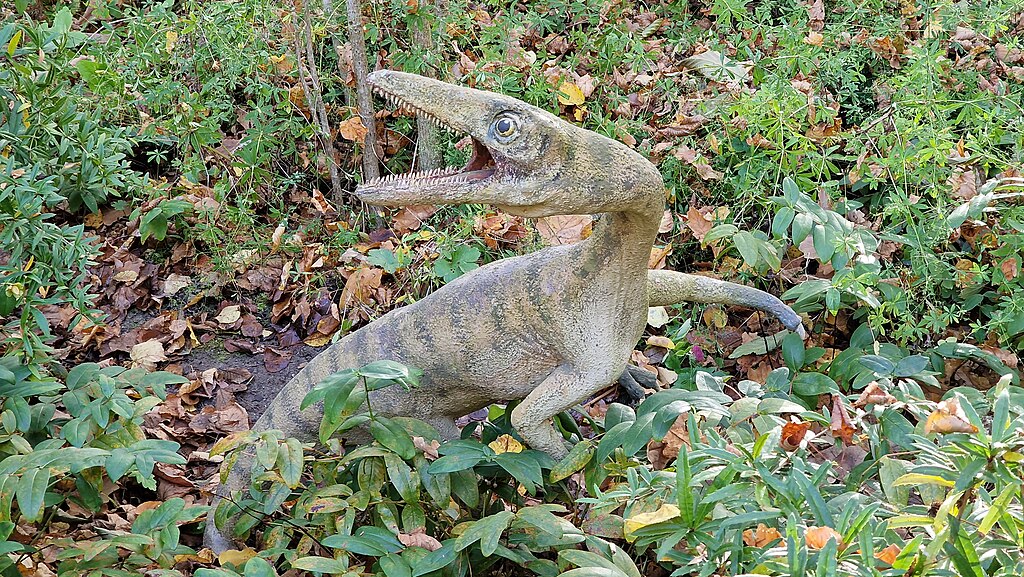
The Mesozoic era witnessed numerous evolutionary experiments in flight and feathered adaptations that left no modern descendants but illuminate the diversity of forms that evolved during this period of rapid radiation. Yi qi and Ambopteryx represent perhaps the strangest of these experiments, developing bat-like membranous wings supported by an elongated wrist bone called the styliform element—a flight structure completely different from the feathered wings of birds. The bizarre Scansoriopterygids, with their exceptionally long third fingers, may have used these digits for climbing or probing for insects before some members evolved them into wing supports. Epidexipteryx sported elaborate tail feathers likely used for display rather than aerodynamics, suggesting that sexual selection played an important role in feather evolution. The heavily built Caudipteryx, though feathered, was clearly flightless and demonstrates that some dinosaur lineages evolved feathers but never took to the air. These evolutionary “side branches” reveal that nature explored numerous possibilities during this period of experimentation, with many novel adaptations arising and disappearing as different lineages tested various solutions to the challenges of their environments. The existence of these short-lived specialists underscores that evolution is not a directed process toward predetermined forms but rather a complex branching pattern of adaptations, many of which prove to be evolutionary dead ends.
The Ancestral Bird: What Did It Look Like?

Reconstructing the appearance and characteristics of the common ancestor of all living birds has become increasingly possible thanks to the rich fossil record of early avians and their dinosaurian relatives. This ancestral bird, which lived in the Late Cretaceous approximately 70-80 million years ago, likely possessed a small body size comparable to a modern sparrow or starling, representing the culmination of the miniaturization trend that characterized the dinosaur-to-bird transition. It would have featured a fully feathered body with asymmetrical flight feathers arranged in a modern wing configuration, capable of powered flight though perhaps not as efficient as modern birds. Unlike today’s birds, this ancestor likely retained small teeth rather than a fully developed beak, similar to those seen in Ichthyornis and Hesperornis. It probably possessed a pygostyle (fused tail vertebrae) supporting a fan of tail feathers rather than the long bony tail of earlier forms. The ancestral bird almost certainly laid eggs and provided parental care, behaviors inherited from its dinosaurian ancestors and observed in modern birds. Sophisticated molecular clock analyses combined with fossil evidence suggest this common ancestor lived shortly before the Cretaceous-Paleogene extinction event that eliminated all non-avian dinosaurs, positioning birds as the sole surviving dinosaurian lineage that would diversify into the 10,000+ species we observe today.
Modern Birds: The Last Dinosaurs

The classification of birds as living dinosaurs represents one of the most profound conceptual shifts in modern biology, transforming our understanding of both groups. This reclassification is based on overwhelming evidence from comparative anatomy, developmental biology, and especially the fossil record, which reveals that birds evolved from small, feathered theropod dinosaurs through a series of transitional forms. Modern phylogenetic analysis places birds nested within the theropod dinosaur group Maniraptora, making them as much dinosaurs as bats are mammals. The Cretaceous-Paleogene mass extinction 66 million years ago eliminated all non-avian dinosaur lineages while sparing some early birds, likely due to advantages such as their small size, seed-based diets that could sustain them when food chains collapsed, and possibly their superior temperature regulation. This survival allowed birds to diversify dramatically during the Cenozoic era, evolving into the approximately 10,800 species recognized today—from tiny hummingbirds to massive ostriches. Recognizing birds as dinosaurs transforms our perception of extinction events; rather than thinking of dinosaurs as extinct failures, we can appreciate them as an extraordinarily successful group that has continuously adapted and thrived for over 230 million years, with modern birds representing their current evolutionary iteration.
Ongoing Discoveries and Future Research

The field of dinosaur-bird evolution continues to advance at a remarkable pace, with new fossil discoveries and methodological breakthroughs regularly refining our understanding of this transition. Recent excavations in Brazil, Mongolia, and Madagascar have yielded important specimens that expand the geographical range of feathered dinosaurs beyond China, suggesting these features were widespread across continents. Advanced imaging techniques like synchrotron radiation and laser-stimulated fluorescence now allow paleontologists to detect soft tissues and feather structures invisible to conventional methods, revealing details previously thought lost to time. Molecular analyses of proteins preserved in exceptionally well-preserved fossils have begun to complement morphological studies, though this remains a controversial frontier in paleontology. One promising area for future research involves more detailed reconstructions of the ancestral bird genome through comparisons of modern bird DNA with that of crocodilians, the closest living relatives of dinosaurs. The integration of developmental biology with paleontology continues to illuminate how embryological processes that produce modern feathers evolved from reptilian skin structures. As new techniques and discoveries emerge, we can expect further refinement of the dinosaur-bird transition timeline and an increasingly detailed picture of how small, feathered dinosaurs transformed into the diverse birds that surround us today.
Conclusion
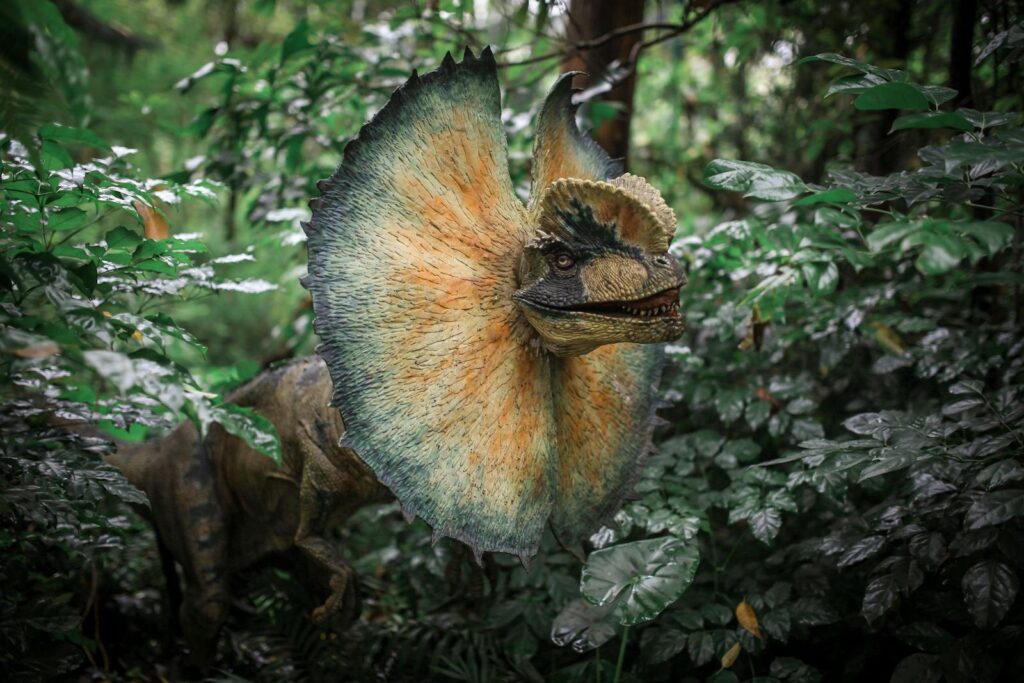
The era of feathered evolution and birdlike miniatures represents one of the most thoroughly documented major transitions in the history of life. From the discovery of Archaeopteryx to the feathered dinosaurs of Liaoning and the increasingly sophisticated understanding of the mechanisms driving this transformation, scientists have assembled a remarkably complete picture of how dinosaurs became birds. This evolutionary journey—involving the development of feathers, reduction in body size, and skeletal modifications for flight—occurred gradually over tens of millions of years through natural selection acting on variations within dinosaur populations. The resulting diversity of forms, including both successful lineages and evolutionary experiments that left no descendants, demonstrates nature’s capacity for creative adaptation. As research continues, each new discovery adds detail to this extraordinary story while reinforcing its central narrative: that the birds we see today represent living dinosaurs, the sole survivors of a lineage stretching back over 230 million years. This scientific understanding not only transforms our perception of dinosaurs from extinct giants to an ongoing evolutionary success story but also provides one of evolution’s most compelling and well-evidenced examples of major adaptive change.


